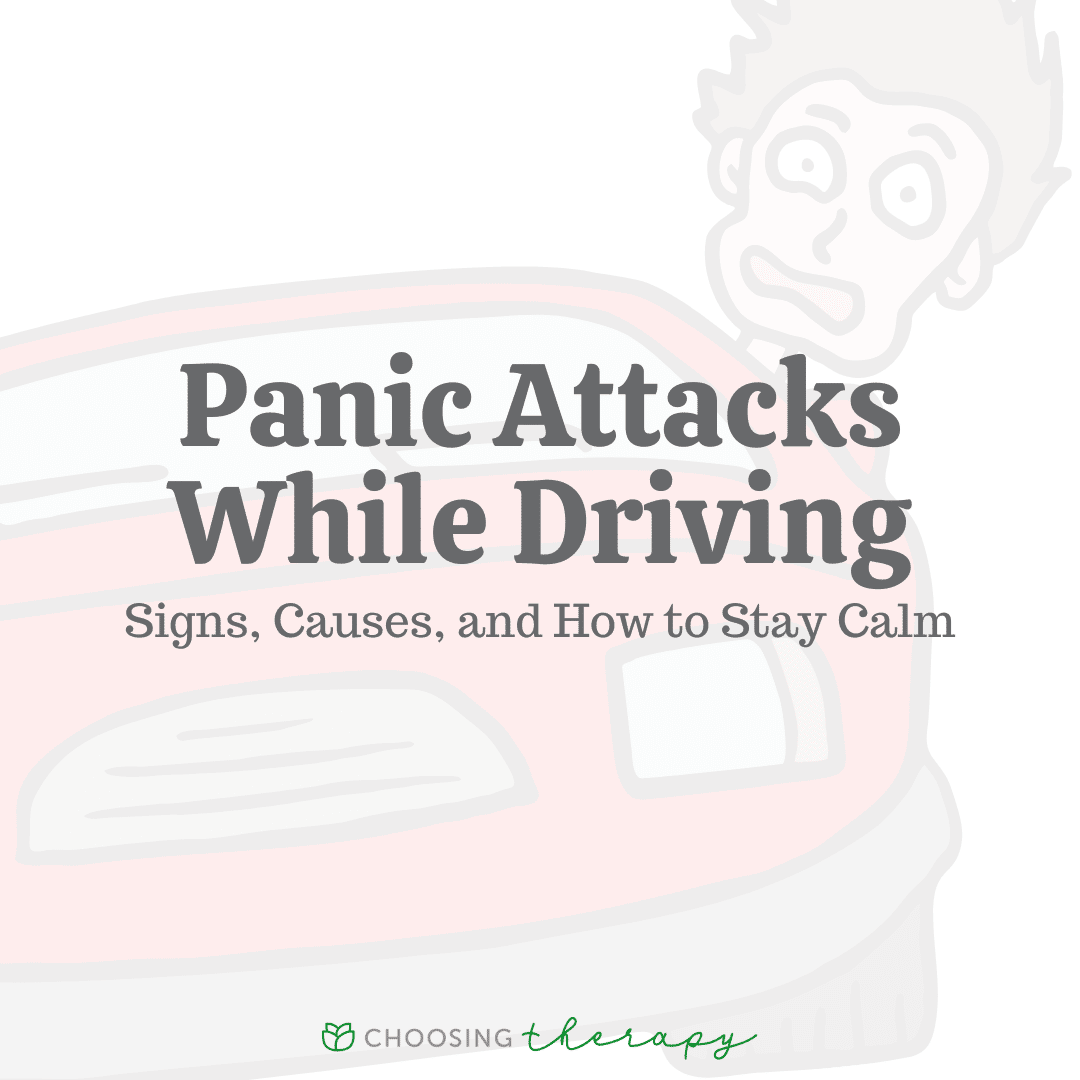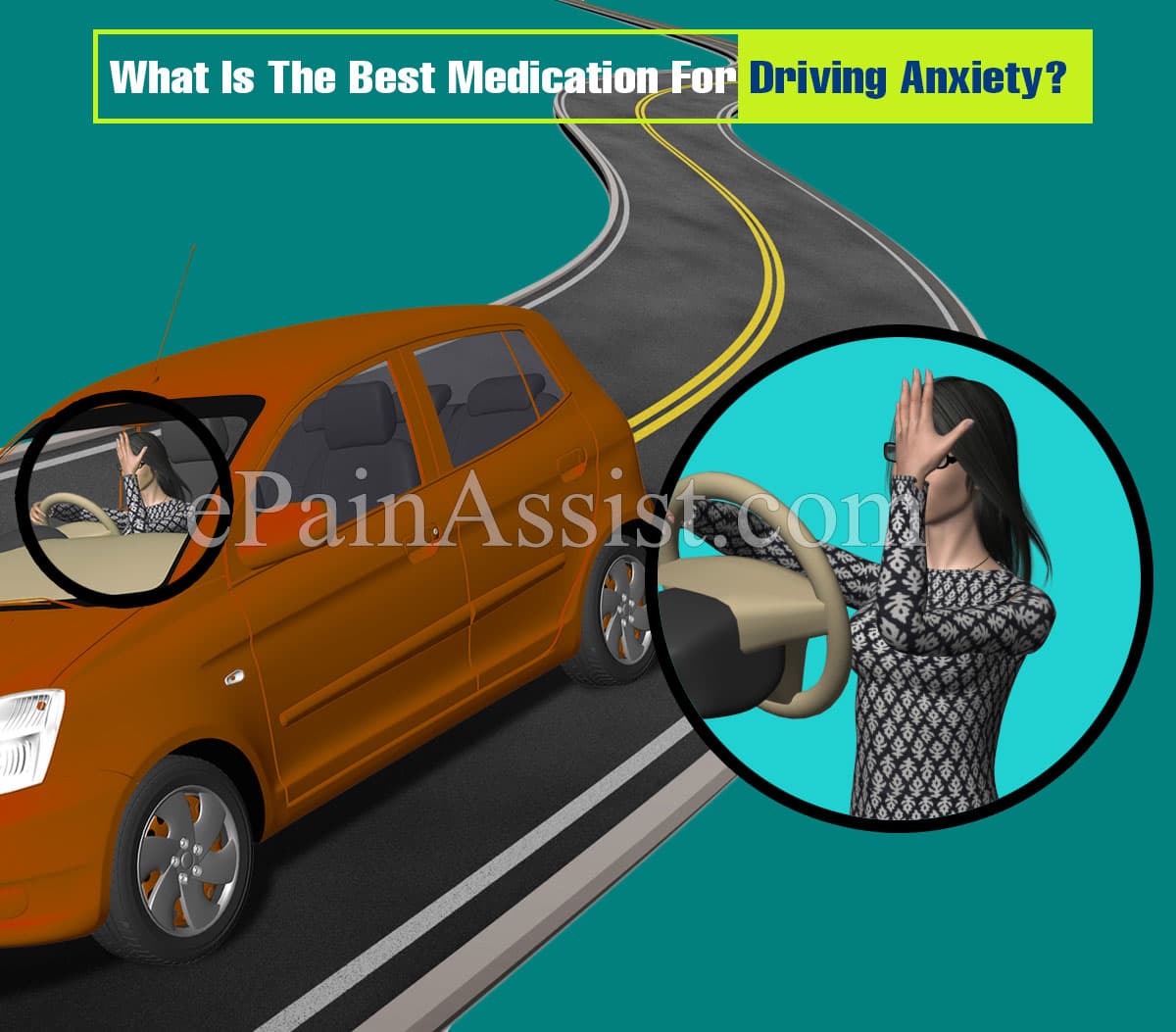Anxiety Attacks While Driving: 5 Tips To Cope
Are you prone to getting anxiety attacks while driving? So was I. This is a common occurrence that you dont need to feel ashamed about. I did for a long time, and it only made things worse. You can read my story here. Because so many people suffer from anxiety attacks while driving, I decided to offer some helpful tips for dealing with them.
Anxiety attacks while driving can be scary, because sometimes were unsure how our bodies will react. Many of us struggle with fear we may pass out or go insane, although this rarely happens.
Fortunately, there are ways of getting through these anxiety attacks. While driving can be stressful in itself, those of us who struggle with anxiety feel the pain in a whole different way.
Tips For Coping With Panic Attacks
Panic attacks can cause fear and physical symptoms. Its not uncommon to feel like you could die, along with other unpleasant sensations.
You might have a hard time staying calm when you feel dizzy, lightheaded, or cant catch your breath. You may need to pull over and get out of your car right away.
If youre in a safe place, getting out of the car may help you feel less panicked in the moment, but it wont help you address whats causing your panic.
But what do you do if its not safe or possible to pull over and get out of your car? Here are several tips to help you cope with panic attacks while driving:
What Causes Anxiety Attacks While Driving
Driving anxiety is difficult to be traced to a particular factor. The connection between stress and driving could be a valid reason why drivers get anxiety attacks.
In the same vein, the cause might not come from stress while driving. Moreover, some panic attacks happen for no reason at all.
Below are the most common causes of anxiety attacks while driving:
- Stress: Imagine a person with a high-stress condition getting behind the wheel to drive. There is a great chance that such a person would encounter panic attacks while driving.
- Anxiety: A high level of anxiety is mostly generated from either the environment or biological conditions. It is a probable cause of such panic attacks.
- Panic Disorder: Panic disorder is a medical condition and is also hereditary. Most people who have panic disorder suffer from panic attacks even if it is not related to driving. Panic or anxiety attacks can occur while driving. It is occasionally predictable or expected, and sometimes not.
- Recent Accident: If someone is a victim of a prior accident, even if not related to driving could trigger panic attacks.
- Driving through a Tunnel or Bridge: Tunnels can make you feel trapped, while bridges can bring the terror of driving over. Driving through a tunnel or bridge can activate phobic feelings, which are the source of anxiety.
- Highway Driving: Faster speed, more distractions, more cars, and traffic are the necessary experience in highway driving.
Also Check: What Type Of Disorder Is Ptsd
You Feel Safer Avoiding Situations You Associate With Panic Attacks
Living with panic disorder typically means you spend a lot of time dreading future panic attacks and doing whatever you can to avoid them.
If you had a panic attack on the train, you might conclude that being on the train triggered the attack.
Maybe you have a panic attack while running in the park or just after presenting your research project. You might then decide to avoid the park or running in general. Perhaps you even plan to skip your next presentation, even though its a big part of your grade.
Remember That Panic Equals Discomfort Not Danger

The fear triggered by a panic attack can be intense as it works to convince a person that they are dying, losing their mind, or having a serious medical event. In reality, panic attacks, even while driving, rarely create actual danger. On the other hand, acting like a panic attack is dangerous could cause people to drive erratically and endanger themselves or others.
Don’t Miss: What’s Worse Schizophrenia Or Bipolar
Breathing Exercise For Panic Attacks
Doing a breathing exercise can help.
Follow these steps:
You should start to feel better in a few minutes. You may feel tired afterwards.
How To Deal With An Anxiety Episode While Driving
Everyone feels nervous sometimes, and it is a natural survival instinct that helps people be aware of their surroundings. Anxiety, however, is a psychological condition that is characterized by persistent feelings of worry, tension, and nervousness. Women are twice as likely to experience anxiety as men, which can be linked to hormone fluctuations experienced during menstruation, pregnancy, and menopause. Anxiety episodes while driving can be extremely dangerous. It is important to understand what anxiety is, what causes it, and how to avoid anxiety episodes while driving.
Dont Miss: What Anxiety Medication Is Safe While Pregnant
Don’t Miss: How Do Veterans Get Ptsd
Any Stress Can Cause Anxiety
Anything that stimulates stress can lead to anxiety, and we all known that driving is stressful. Every instance youre behind the wheel, you not only have to drive to your destination, but also dodge others driving at high speeds, while texting, or under adverse weather conditions. As much as we might not want to admit it, everyone is just not as skilled or talented at driving like they should. Most of us have had at least one frightening driving experience, witnessed new reports of car accidents, or simply undergone our own anxiety while on the road.
How To Prevent Panic Attacks While Driving
Are you struggling with fears, worries and panics while driving? Its certainly an unpleasant feeling that can often occur on the highway which can be dangerous. As you reach through, you will learn how to stop a panic attack while driving in 5 steps.
A panic attack can be defined as a sudden rush of intense symptoms, that peak in intensity as they emerge. It usually lasts for 5 to 20 minutes, and then rapidly fades away. One feels like they are in dire problems and overwhelming fear grips them. There is also a feeling of being detached from the world around you. These attacks occur at random or even after exposure to events that trigger the attack. It is important to note that panic attacks are not dangerous, and should not result in any physical harm, however, they can become more frequent and more severe if not treated.
Physiological symptoms of Panic attacks
- A sensation of irregular heartbeat
These symptoms result from the fact that your body goes into either fight or flight mode as it tries to respond to a potential threat. Your breathing is quickened as the body tries to take in more oxygen, while production of hormones like adrenaline is what causes a faster heartbeat and muscular tension.
Read Also: Is Bipolar Disorder A Mood Disorder
Using Herbs To Address Driving Anxiety
If you have tried the above methods but they do not appear to deliver the anticipated results, it might be time to go for the herbal remedy. The herbal treatments are preferred by many people because results are realized faster than other strategies. Here are the best herbs for driving anxiety:
- St. John Wort: This is one of the medicinal herbs that have been in use for more than 2000 years. It is used for treating nerve disorders and is beneficial for people suffering from mild to severe driving anxiety. It works by prolonging the impacts of serotonin to promote mood balance.
- Valerian: This is another common herb used for treating anxiety and stress. It contains valeranon that is used to help relax the body.
- Passionflower: Like valerian, the passionflower is known for its calming effect that helps to combat driving anxiety and fatigue. The main ingredients of passionflower herb include alkaloids, steroids, and glycosides.
- Lavender: Recent studies have confirmed that Lavender can help to calm nervousness and ease stress. The herb does not just have a lovely scent, but it also helps to reduce tension in the brain.
How To Stop Panic Attacks While Driving
Here are some tips to help you cope with having a panic attack while driving. Use Self-Talk to help shift you away from reacting with catastrophic thoughts to more helpful thinking. Do some Deep breathing to reduce feeling dizzy or lightheaded and help you feel more in control. Progressive Muscle Relaxation will help your heart slow down and reduce tension. Use Safe Distraction to shift your brain from the panic by pulling your attention out of your head and outside of your body. Use Time Projection to help you move your focus away from the danger and to a safe destination. Take breaks when driving long distances to help you relax and regain mental focus. Eat snacks to maintain healthy blood sugar levels to decrease physical and mental exhaustion and increase your ability to manage anxiety.
Also Check: What Is The Most Important Predictor Of An Eating Disorder
How Is Amaxophobia Diagnosed
If amaxophobia disrupts your life, your healthcare provider may recommend seeing a mental health professional like a psychologist. The American Psychiatric Associations Diagnostic and Statistical Manual of Mental Disorders doesnt recognize amaxophobia as a phobic disorder. But a psychologist may make a diagnosis after evaluating your symptoms.
You may have a specific phobic disorder if the fear:
- Occurs when you are in or near a vehicle.
- Causes you to miss out on work, social events and life.
- Affects your ability to enjoy life.
- Brings on symptoms of fear or anxiety that dont match the actual danger.
- Lasts at least six months.
Support And Treatment For Your Panic Attacks

When looking for professional support for panic disorder, start by visiting your GP or a mental health treatment provider like Priory.
They will be able to assess you and provide you with a diagnosis and access to treatment. A therapeutic programme is often recommended for people who suffer with panic attacks. They provide you with a safe space in which you can work through the thoughts and feelings that cause your panic attacks. They also give you an opportunity to learn strategies to help you manage them in the future.
Some therapeutic techniques used in the treatment of panic attacks, which are available at Priory, include the below:
Cognitive behavioural therapy is a therapy technique that teaches people how to challenge and replace anxious thoughts to prevent panic attacks. Mindfulness and relaxation techniques are also taught in CBT to help people better manage their anxious thoughts and stop them from getting out of control
Don’t Miss: How To Know If You Suffer From Anxiety
Dispelling Panic Disorder Myths
Weve got the facts behind the myths you may have heard.
Myth: Youre crazy. The word crazy can prompt plenty of stigma on its own, of course, but the point here is this: You can have panic disorder without any other mental health symptoms.
Myth: Youre faking it. Your fear may not have a recognizable source, but that doesnt make it any less real.
Myth: A bad panic attack can kill you. You might worry about having a heart attack, fainting, or dying, but the physical sensations of panic dont pose any threat to your health. Theyll pass when the attack ends.
Myth: Your attacks will stop if you just calm down. Panic disorder is a mental health condition. It doesnt happen because you have a hard time regulating emotions.
Fact: You cant help having panic disorder. Theres no cure yet, but treatment can help you learn to effectively navigate both panic attacks and your fears.
Not everyone experiences panic attacks in the same way, so two people living with panic disorder might notice different sensations and symptoms.
That said, you might recognize some of these common experiences.
You Think You Might Die
Panic attacks often involve chest pain, choking sensations, and difficulty breathing. Your thoughts might swim and race, overwhelming you as your vision blurs or narrows. You might even feel as if your limbs are heavy or frozen and struggle to move.
When you arent used to these sensations, you might believe something is terribly wrong. You could assume youre having a heart attack, stroke, or other health emergency.
Its also common to experience feelings of impending doom with panic attacks, so you might even wonder whether youre about to die.
Read Also: Does Schizophrenia Affect A Certain Ethnic Group
Schedule A Consultation With Us Right Away
You deserve adequate financial compensation if youve suffered traffic accident injuries due to distracted driving in Maryland. If the crash was due to their panic attack and anxiety, consult your car accident lawyer to understand your options.
Our Maryland personal injury attorneys at Pinder Plotkin LLC are always ready to listen to you. As our top priority, well tailor our legal services to suit your peculiar needs. We also work on a contingency fee basis to enable you to get justice regardless of your financial standing. Book a free consultation with us today.
Other Strategies For Anxiety
Maintaining a healthy lifestyle may help someone with driving anxiety manage their symptoms.
The ADAA advises people who experience anxiety to use the following strategies:
- talking with a partner, friend, or doctor about their anxiety
- becoming aware of what triggers anxiety by keeping a journal
- being active, eating a balanced diet, and avoiding skipping meals
- avoiding caffeine, which can trigger anxiety symptoms
Don’t Miss: How To Prevent Eating Disorders
Interrogate Your Catastrophic Thoughts
When you drive or think about driving, do you worry about the worst case scenario? For example, do you focus on the idea of crashing, getting caught by a speed camera or becoming lost? It is likely that these catastrophic thoughts are triggering your panic attacks.
Learning to pause and challenge these worries can help you to start recognising their irrationality. This can then stop catastrophic thoughts in their tracks before they lead to panic attacks.
Start Driving Early In The Morning
One of the best ways to get used to driving is to drive at the beginning of the day when traffic is not too heavy and especially on the weekends. This is an effective way of becoming confident with your driving. You can tell a friend or a relative to go in the car and accompany you while you become more comfortable.
Read Also: Where Does Schizophrenia Come From
Panic Attack While Driving
A panic attack is a sudden onset of intense fear that climaxes within minutes. Indeed, it is considered one of the causes of driving anxiety. Panic attack controls the whole body and mind making it difficult to pay attention to anything else.
In most of the cases, panic attacks are accompanied by physical symptoms like knots in the stomach and racing heart. However, panic attacks can be differentiated from other forms of anxiety because they are intense and frequent. These symptoms make panic attacks to closely resemble breathing disorders or heart disease. If you are driving, panic attack can create a feeling that you are no longer in control and a bad thing is about to happen.
A panic attack is very complicated and you need to learn how to control it to avoid harm to yourself and others.
Ways To Overcome A Panic Attack While Driving

Anxiety can strike in the most unusual places at the most inopportune times. What was previously a normal task or just another frequented location suddenly becomes a source of gripping panic and unease. Driving can be one such activity. The confusion and loss of rationale and self-control make a panic attack while driving highly dangerous.
So whether you suffer from Generalized Anxiety Disorder, or the driving variant of Agoraphobia, here are 5 psychiatrist-approved ways you can overcome a panic attack while driving:
Read Also: Can You Get Ptsd From Mental Abuse
Anointedsmiledrops: Stateofmindboostingsupplementoilthatfunctions How To Deal With Panic Attacks While Driving
Tension,anxiousness,anxietyattackandalsobewilderisdifficulttodealwith.
Thislast2yearshavebeenexceptionallyexhausting.Jobloss,moneyconcerns,disease,absenceofrest,foodcostsaswellastheworryofnotknowingwhatisfollowing.
Nonetheless,itisfeasibletoreducethedamagingeffectsbroughtonbytensionaswellasanxiety.Andalsoareafraidthatcausespanicattacks.
How To Help Someone Having A Panic Attack
Seeing a friend or loved one suffering a panic attack can be frightening. Their breathing may become abnormally fast and shallow, they could become dizzy or light-headed, tremble, sweat, feel nauseous, or think theyre having a heart attack. No matter how irrational you think their panicked response to a situation is, its important to remember that the danger seems very real to your loved one. Simply telling them to calm down or minimizing their fear wont help. But by helping your loved one ride out a panic attack, you can help them feel less fearful of any future attacks.
Stay calm yourself. Being calm, understanding, and non-judgmental will help your loved ones panic subside quicker.
Focus your loved one on their breathing. Find a quiet place for your friend to sit and then guide them to take slow, deep breaths for a few minutes.
Do something physical. Together, raise and lower your arms or stamp your feet. It can help to burn off some of your loved ones stress.
Get your friend out of their own head by asking them to name five things around them or talking soothingly about a shared interest.
Encourage your loved one to seek help. Once the panic attack is over, your loved one may feel embarrassed about having an attack in front of you. Reassure them and encourage them to seek help for their anxiety.
Panic attacks: what they are and what to do about them Free course to help you manage panic.
Hotlines and support
Don’t Miss: How Does Exercise Help Depression